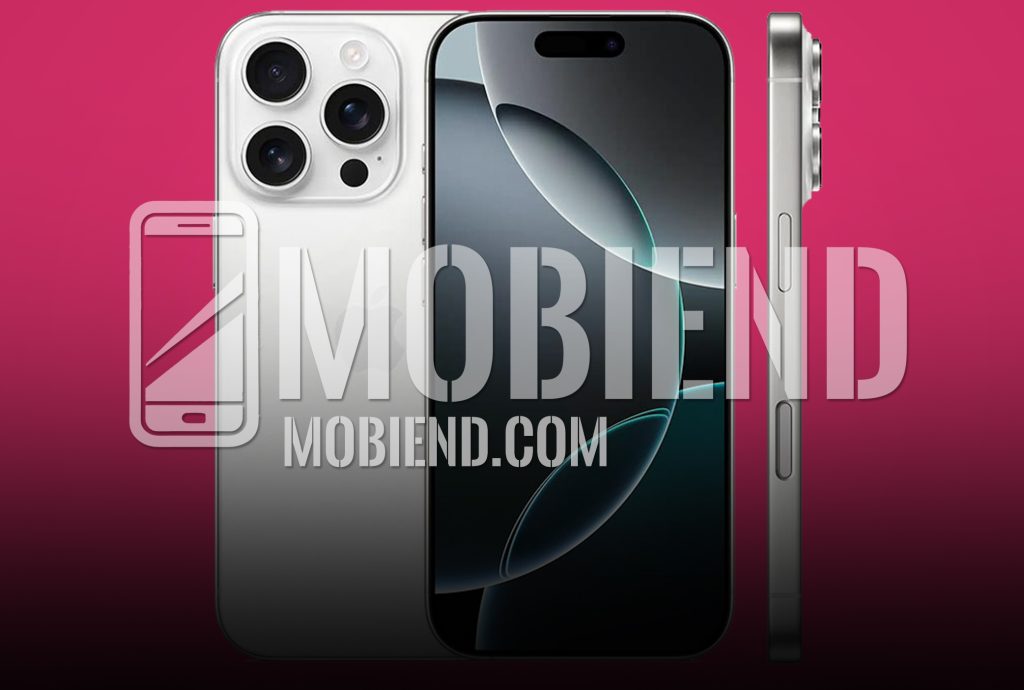The Pro version from Apple is the closest version to the larger version of it. In this article, we will explain the features of the iPhone 16 Pro and compare its features with the smaller version of it, the iPhone 16.
Unboxing
As expected, the retail box for the iPhone 16 Pro only contains the phone, a braided USB-C cable, and a SIM ejector tool.
That’s about it. Despite its rarity, it’s still more than what Sony offers, for example, so it’s something important.
Design
We think that the specifications of the iPhone 16 Pro from Apple are identical to those of its younger brother, the 15 Pro. So what’s really new? Well, for starters, it’s bigger. Then it comes with a third-generation Ceramic Shield that’s 2x stronger on top of its new, larger, bezel-less display. Finally, there’s a new camera control key, which could be magic or just a trick, depending on your point of view.
There’s clearly not much new when it comes to the design, which is to be expected. The iPhone 15 Pro was the pinnacle of this new iPhone lineup with its titanium frame. Now we’re only seeing incremental improvements.
For example, Apple has now used a new grade 5 titanium for the frame. We’ve already mentioned the third-generation Ceramic Shield glass up front, too. And let’s finish with the Corning glass back, which to this day remains unrecognizably refined.
But make no mistake about it – the iPhone 16 Pro is one of the toughest and most premium phones on the market right now.
It has Apple’s traditional flat design, and everything except the screen has a smooth, matte finish. The phone is IP68-rated for dust and water resistance, with durability that goes beyond the standard’s requirements – up to 6 meters underwater (versus the required 1.5 meters) for half an hour.
The iPhone 16 Pro is still available in natural titanium, black, and white, as well as a Desert Titanium color that replaces the blue color.
The new 6.3-inch LTPO OLED display with a pill-shaped notch is impressive – it has very thin bezels, everything looks sharp, contrast is great, there’s plenty of brightness and it offers excellent HDR implementation.
Camera
The smaller Pro no longer has to make do with inferior hardware to the Max – the 16 Pro gets the exact same setup as the 16 Pro Max, including the 5x zoom camera and the new ultra-wide-angle camera. That’s in addition to the new Tone setting in the camera app, plus the obvious camera control switch, of course.
The new ultra-wide-angle camera for this generation uses a 48MP Quad Bayer sensor instead of the old 12MP RGB sensor. Apple doesn’t specify the sensor size, but simple math suggests it’s 1/2.55-inch – if the old sensor was 1/2.55-inch with a 1.4µm pixel pitch, the new sensor with a 0.7µm pixel pitch will almost certainly be 1/2.55-inch as well.
The main camera uses the same 1/1.28-inch sensor as last year – a reasonable size in the global scheme of things and a bit larger (not insignificantly, but still) than what’s found in major rivals like the Pixel 9 Pro.
The telephoto lens is a big upgrade on the 16 Pro – it gets a 5x zoom module from the Maxes, rather than the 3x module from last year’s non-Max Pro. It’s not a cutting-edge piece of equipment – the 12MP 1/3.06-inch RGB shooter doesn’t look remotely impressive in 2024. However, the quad-prism lens is far from ordinary, with Apple’s folded design setting it apart from periscopes from almost every other company.
There don’t appear to be any changes to the selfie camera compared to the previous generation.
Phone Performance
Apple’s iPhone 16, 16 Plus, 16 Pro, and 16 Pro Max all come with the latest available version of iOS 18 preinstalled. While Apple has tried to present this new version as one of the biggest redesigns, it doesn’t feel like much in day-to-day use. However, allowing for deep customization options across the home screens and interface has the potential to make the UI feel quite unique and different, something that has been missing from iOS over the years.
Advantages and disadvantages of iPhone 16 compared to the Pro version
Advantages
Lower price: The iPhone 16’s significantly lower price makes it an attractive option for budget-conscious consumers looking for a premium smartphone experience.
Smaller size and lighter weight: The smaller size and lighter weight of the iPhone 16 compared to the iPhone 16 Pro make it more comfortable to hold and use with one hand.
Access to Apple Intelligence: The iPhone 16, like the iPhone 16 Pro, will get Apple Intelligence features once iOS 18.1 is released, providing a similar AI-powered experience.
Action button and camera control button: Both the iPhone 16 and iPhone 16 Pro feature these two new buttons, providing enhanced functionality and control over various features and the camera system.
Disadvantages
Display: The iPhone 16’s display lacks the ProMotion and Always-On features found on the iPhone 16 Pro, resulting in a less smooth and responsive screen experience.
Camera: The lack of a dedicated telephoto lens on the iPhone 16 limits its zoom capabilities compared to the iPhone 16 Pro.
Processor power: Despite the iPhone 16’s powerful A18 processor, the iPhone 16 Pro features a more powerful A18 Pro processor.
Build materials: The iPhone 16 uses an aluminum frame, while the iPhone 16 Pro uses a more premium titanium body.
Conclusion
The iPhone 16 stands out as an exceptional value for users who prefer affordable prices without compromising on performance or features. It offers a similar experience to the iPhone 16 Pro in many aspects, including access to Apple Intelligence and new action buttons and camera controls, but at a much lower cost. However, for users who demand the best in display technology, camera capabilities, and processing power, the iPhone 16 Pro remains the better option.
iPhone 16 Pro Price
Abroad, the 128GB version is priced at $1,000.. the 256GB version is priced at $1,100.. the 512GB version is priced at $1,300.. and the 1TB version is priced at $1,500.
In Egypt, the 256GB version is priced at about 60,000 pounds.
In Saudi Arabia, the 128GB version is priced at 4,700 riyals.. the 256GB version is priced at 5,200 riyals.. the 512GB version is priced at 6,200 riyals.. and the 1TB version is priced at 7,200 riyals.
In the Emirates, the 128GB version is priced at 4,300 dirhams.. the 256GB version is priced at 4,700 dirhams.. the 512GB version is priced at 5,550 dirhams.. and the 1TB version is priced at 6,400 dirhams.



